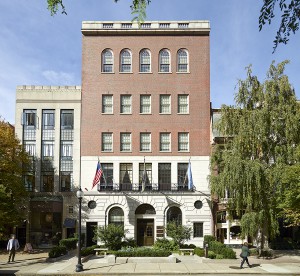 In yesterday’s post, I covered some of the more than 250 blog posts published in Vita Brevis during the first half of 2014. The series concludes with a post from each of the last six months of the year.
In yesterday’s post, I covered some of the more than 250 blog posts published in Vita Brevis during the first half of 2014. The series concludes with a post from each of the last six months of the year.
At the end of July, Katrina Fahy solved a genealogical puzzle using family letters, since the family in question lived in a region with few available nineteenth century vital records: “Using Caroline Ames’ letters, combined with census records and death certificates, I thought I had found her mother: an Ellen or Helen Williams. With this potential name, I searched North Carolina Marriage Records for an Ellen or Helen Williams marrying an Ames, and came across a marriage record for a David Ames marrying Ellen Williams in Brunswick County in 1861. And with that, we had determined the parents of Caroline Ames.”
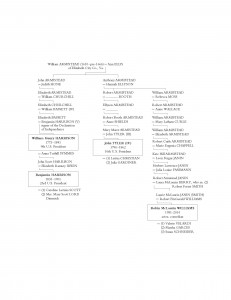 On 14 August, Christopher C. Child published some notes on Robin Williams’s maternal ancestry. Chris walked readers through some of his research process, alerting readers to new research on the origins of Judith (Hone) Armistead: “The Armisteads are a very early Virginia family, going back to Anthony Armistead and Frances Thompson of Kirkdeighton, Yorkshire, who married in 1608. Their son William Armistead was baptized at All Saints’ Church in Kirkdeighton 3 August 1610, married Ann Ellis in 1632, and by 1635 was living in Elizabeth City County, Virginia. The 1910 Armistead genealogy takes Robin’s Armistead line down to his great-great-great-grandfather, “Robert [Curle] Armistead, married ______, of New Orleans.”
On 14 August, Christopher C. Child published some notes on Robin Williams’s maternal ancestry. Chris walked readers through some of his research process, alerting readers to new research on the origins of Judith (Hone) Armistead: “The Armisteads are a very early Virginia family, going back to Anthony Armistead and Frances Thompson of Kirkdeighton, Yorkshire, who married in 1608. Their son William Armistead was baptized at All Saints’ Church in Kirkdeighton 3 August 1610, married Ann Ellis in 1632, and by 1635 was living in Elizabeth City County, Virginia. The 1910 Armistead genealogy takes Robin’s Armistead line down to his great-great-great-grandfather, “Robert [Curle] Armistead, married ______, of New Orleans.”
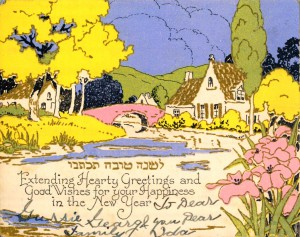 In September, Kelsey Sawyer showed a small selection of Rosh Hashanah cards in her blog post: “The antique postcards in the collections of the American Jewish Historical Society–New England Archives [today’s Jewish Heritage Center at NEHGS] mostly date from 1900 to the 1920s. Many of these postcards have intricate floral designs and fret work, and some have been embossed with silk to add further detail. Additional flourishes, done by hand, include painted petals, gold borders, and added sparkles.”
In September, Kelsey Sawyer showed a small selection of Rosh Hashanah cards in her blog post: “The antique postcards in the collections of the American Jewish Historical Society–New England Archives [today’s Jewish Heritage Center at NEHGS] mostly date from 1900 to the 1920s. Many of these postcards have intricate floral designs and fret work, and some have been embossed with silk to add further detail. Additional flourishes, done by hand, include painted petals, gold borders, and added sparkles.”
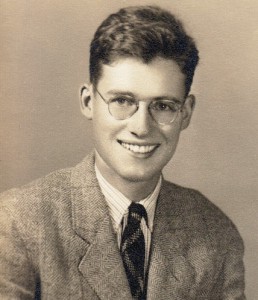
On 8 October, Henry Hornblower wrote about Chris Child’s research on his great-grandmother, Eleanor (Greenwood) Hornblower, proving that Mrs. Hornblower – and her son (Henry’s grandfather), the founder of Plimoth Plantation – had a hitherto unknown Mayflower line. What made the Hornblower line so interesting was that it seemed to contradict one of the assumptions we tend to make about our ancestors: that, lacking an easy way to travel (in the modern fashion), they stayed within set geographical bounds. Quoting Chris: “The only [Greenwood] ancestor I found born beyond the Bourne Bridge was Henry’s great-great-great-great-great-great-grandmother ‘Elizabeth Smith,’ wife of William Stratton of Athol, Massachusetts…. As I researched this further, I realized she was actually the widow Elizabeth (Lombard) Smith, daughter of James and Thankful (Dyer) Lombard and widow of Moses Smith. James and Thankful were Truro natives and their first eight children were recorded there between 1754 and 1770 (Elizabeth being the eldest). In 1771, James Lombard purchased 112 acres of land in Athol and they had two more children there. Thus, this Cape Cod couple journeyed 175 miles inland to northern central Massachusetts in the late eighteenth century, to an area I generally have not associated with Mayflower descendants.”
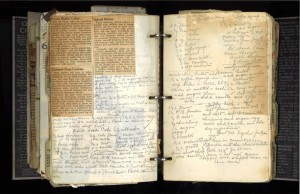 For Thanksgiving, Laura Brown looked for clues about its compiler in a thrift store cookbook: “As I was flipping through the pages (which is rather difficult since this binder is actually bursting at the seams), I found a recipe for just about any occasion. Stuffing, date bars, tomato preserves, liver fricassee: if you have a craving for it, you could probably find a recipe for it somewhere in the pages of this binder.
For Thanksgiving, Laura Brown looked for clues about its compiler in a thrift store cookbook: “As I was flipping through the pages (which is rather difficult since this binder is actually bursting at the seams), I found a recipe for just about any occasion. Stuffing, date bars, tomato preserves, liver fricassee: if you have a craving for it, you could probably find a recipe for it somewhere in the pages of this binder.
“Although I thoroughly enjoyed seeing the decades-old clippings from newspapers and magazines taped, glued, and even pinned to the pages of the binder, my favorite finds were the handwritten recipes, or even better, the recipes that had handwritten corrections. These recipes jumped out to me because they reminded me so much of some of the cookbooks that my family has at home.”
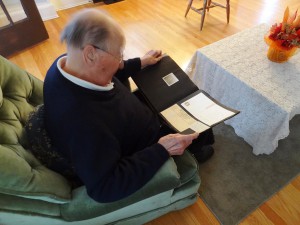 And at Christmas, Kyle Hurst wrote about the revelations to be found in her grandfather’s World War II-era scrapbook. In addition to reading the telegrams sent between Frankfurt, Germany, and Union City, New Jersey (“Getting along fine Going on furlough July 17 [1946]”), Kyle learned that her grandfather had once been known as “Chubby”, “a nickname we never knew he had but which was all he was called before he started his own family.
And at Christmas, Kyle Hurst wrote about the revelations to be found in her grandfather’s World War II-era scrapbook. In addition to reading the telegrams sent between Frankfurt, Germany, and Union City, New Jersey (“Getting along fine Going on furlough July 17 [1946]”), Kyle learned that her grandfather had once been known as “Chubby”, “a nickname we never knew he had but which was all he was called before he started his own family.
“That night as we went through the album, we learned about our patriarch’s youth, but more, we all bonded by sharing that moment with him and each other…. Our rapt attention and questions from that December night three years ago has opened up my grandfather to sharing experiences of all kinds with us and future generations.
“This Christmas, I will again be with my grandparents, and I sure hope there’s another box filled with memories instead of just the festively wrapped ones under the tree.”
These twelve posts represent about 5% of all the Vita Brevis posts of 2014, so if none of them capture your fancy, perhaps some of the other 95% will. For all our readers, I wish you a 2015 filled with research successes and graceful leaps over brick walls!
Thank you for such a terrific resource. I’ve enjoyed all the vita brevis blogs and always find they contain an interesting and or useful tidbit. Sometimes more than a tidbit. A suggestion from Scott C. Steward’s Dec 19 blog “Jump starting your genealogical research” has led to a fascinating discovery about our family’s journey. Following Scott’s advice, I entered our names at the Poznan Project and there we were! I can’t wait to see what revelations this year’s blogs will lead to.
Thanks, Jill, and congratulations on your find!
Scott,
Many thanks for your endeavors this year, especially through “Vita Brevis.” It is through the means and methods of the authors of these blogs – and via the many reader’s in reply that the very brick walls we all face can certainly be challenged in a new light. With hard work, guidance, and a little luck to guide us gracefully, we have well nourished hopes that they shall be overcome. – Oh heck, Scott I’d take a few “tear it downs” on some of those walls! 🙂
In any event, thanks again. Here is wish you and yours all the best of 2015!!!
Sincerely,
J. Record
Thank you, Jeff, for your kind words and your support of Vita Brevis throughout 2014!
Have you considered publishing Vita Brevis articles submitted by readers? I would be very happy to share the circuitous route of my research, which resulted in approval of my application to The Society of Mayflower Descendants, including some creative thinking that got me around some document deficient roadblocks. Mayflower descendancy was a truly unexpected discovery for me! The NEHGS provided a crucial piece of evidence!
Dear Steven: Yes, we have considered it, but at the moment we are still finding our way with the staff writers we have. You might want to contact The Weekly Genealogist or American Ancestors magazine to write about your Mayflower find — it could be very interesting to them!
Thanks, Scott! I appreciate the suggestion.
Fascinating information in above Blog! Thank you.
Mary Eagleson in Lincoln, Nebraska
Thanks, Mary!